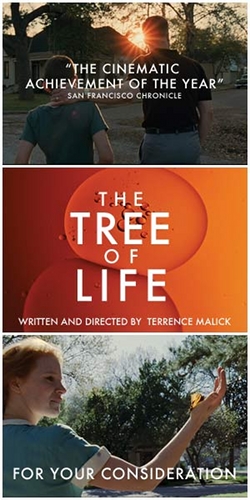Review: Pina (2011)
Simply put, 3D neither enhances nor detracts from the tribute of dance that Wim Wenders’ documentary film Pina purports to be. Despite Wenders’ own admission, 3D only somewhat conveys more electrically the late, famed works of German choreographer Philippina “Pina” Bausch (1940-2009) and their interpretations by her Tanztheater Wuppertal dancers—here, Le sacré du printemps (1975), Café Müller (1978), Vollmond (2006), and Kontakthof (1978/2000/2008). Stripped of its 3D trappings and the distracting rhetoric that accompanies the format, what remains the core of Pina is the endless creativity and beauty of the human body, nothing more and nothing less. Literally incarnating this core is, of course, Pina herself. Though absent in the flesh in the film—Pina died two days before rehearsals for the film began, much to everyone’s shock—she is very much present throughout the film. For the sublime wonder of dance is that one’s works literally live on in other people’s bodies. For this simple reason, even for those who are not familiar with Pina’s dance theatre, Pina is a lovely work of simultaneous mourning and celebration of Pina.
Friends since the mid-1980s, Pina and Wenders had been speaking of making a film together grounded in Pina’s dance theatre for just as long. But Wenders felt that technologically cinema was not yet ready to take on the power of Pina’s works. Certainly, no one can blame Wenders for wanting only the best of possible film worlds to capture the spirit of Pina’s works with the Tanztheater and how much they move him. At the same time, Wenders’ claim denies the long history of the partnership between dance and film that stretches back to the 1890s. After all, both cinema and dance are inherently about movement, technically and performatively. Of course, no one’s choreography is like that of Pina’s. But if Pedro Almodóvar was able to bring to the screen Pina’s Café Müller and Masurca fogo (1998) in his 2002 film Hable con ella in as emotional a way as he did, in non-3D format at that, one wonders what could have been done earlier with Pina in the flesh and without the crutch of 3D. But enough of these moot points. To the film at hand…
After all, both cinema and dance are inherently about movement, technically and performatively.
Because the film is a tribute to Pina and because Pina was dance theatre personified, what Wenders does well here is to refuse the documentary film codes/conventions of talking head interviews, generic archival footage, and biographical chronology, none of which would have been of any use in dance terms. In this way, Wenders does challenge the general approach to dance and documentary by having the former dictate the latter and not the other way around. Wenders’ camera practically genuflects to Pina’s works, the dancers, and the dancers’ solos, all of which were shot at Wuppertal. Wenders constructs the film’s own rhythm by weaving back and forth between Pina’s four pieces, the dancers’ solos, and medium- and close-up shots of the individual dancers.
Le sacré du printemps strongly sets the theme of the fight between the sexes in pursuit of love and hope that characterize a lot of Pina’s works: on a stage filled entirely with peat, so that the dancers’ movements are traced, a group of women and a group of men gradually challenge and fight each other, culminating in the sacrifice of a woman. The soft brownness of the peat, the energetic cream/tan/beige colors of the skin, and the sharp redness of the dress come together in beautiful tension. Among the four pieces, however, the most endearing, moving, and surreal are undoubtedly Café Müller and Kontakthof. Anyone who possesses a modicum of sensitivity will be affected by these performances, 3D or otherwise. In the former, the style of chairs, the scattering of them across the stage with only a table here and there; a lone woman in the background left walking forlornly next to and against a wall; the man who pushes away the chairs as other women walk through the stage, blind, among other things, create a dream-like, Magritte-esque ambiance of blue-/grey-toned anonymity and longing that continues to resonate emotionally today. In the latter, the three sides of the stage, designed like a dance hall, are lined with chairs, on which the dancers sit. At times, they get up from their chairs, approach each other, and size up one another; other times, they dance in pairs; yet still other times, the women are standing and lined up against one wall, moving furiously, while the men from the other side move their chairs closer and closer to the women at different speeds. It is an exhilarating piece that touches upon the theatre of the absurd in a marvelous way. It was a great choice to present this piece in the three ways in which Pina had premiered it in 1978, 2000, and 2008: first with her dancers, then with non-professional dancers aged sixty-five and over, and then with teenagers.
Anyone who possesses a modicum of sensitivity will be affected by these performances, 3D or otherwise.
With the dancers’ solos, performed outdoors in disparate places like industry plants, sidewalks and intersections, and the countryside, the film contributes to the performances in terms of marrying the movement with an architectural space or setting, unlike the case for the four main pieces. Wenders also shot medium- and close-up shots of the individual dancers with disembodied, unsynched voiceovers that speak of one’s particular history and experience with Pina in the Tanztheater. Though like shots of talking heads, they should be considered more as parts of the dancers’ solos in a contrasting way since they show everyday moments of stillness, which is a form of movement in terms of connecting one gesture to another in time. Arguably, this stillness and the everyday are in keeping with Pina’s aesthetic and vision, for she could take the most banal human gesture and recontextualize it in relation to other movements and reveal the depth of emotions that it possesses. With or without 3D, Pina manages to convey the dynamism of Pina’s aesthetic and vision, thanks above all to her dancers.
-
Karenatasha
-
Rowena S Aquino

















 Review: Le Havre (2011)
Review: Le Havre (2011) Review: Harakiri (1962)
Review: Harakiri (1962) Review: Return of the Living Dead (1985)
Review: Return of the Living Dead (1985) Review: Killer Elite (2011)
Review: Killer Elite (2011) Subversive Saturday: Traite de bave et d’eternite (1951)
Subversive Saturday: Traite de bave et d’eternite (1951)



